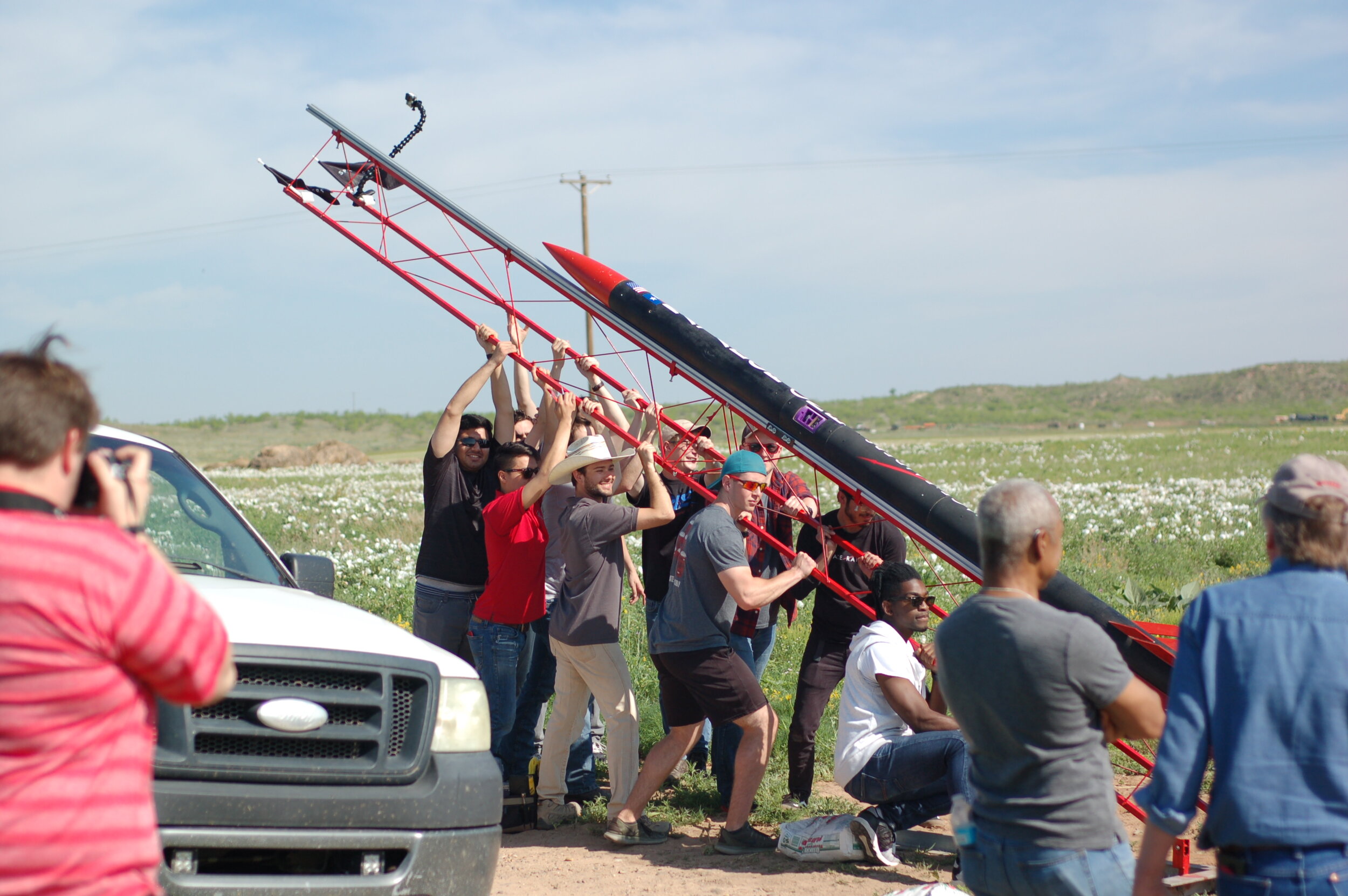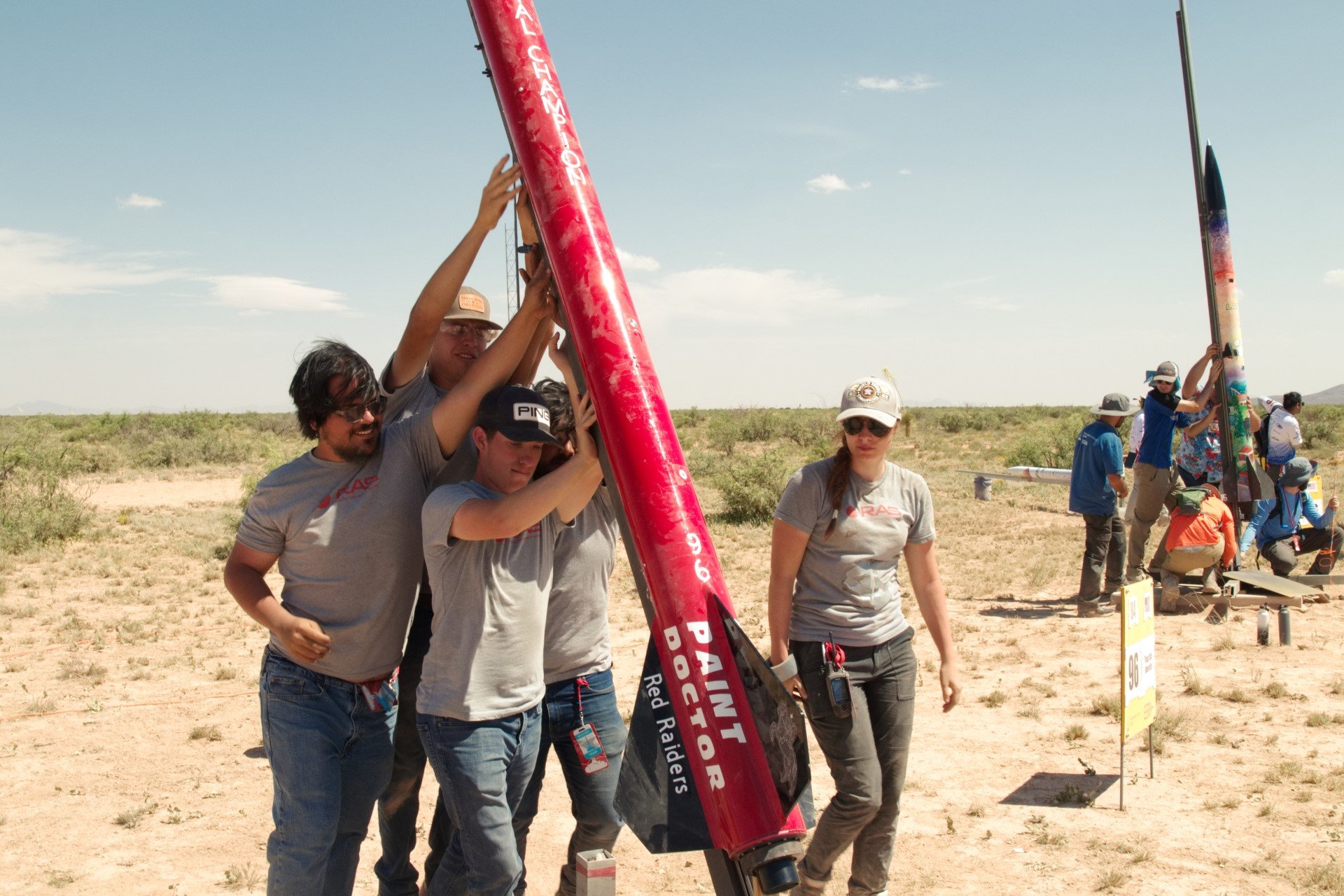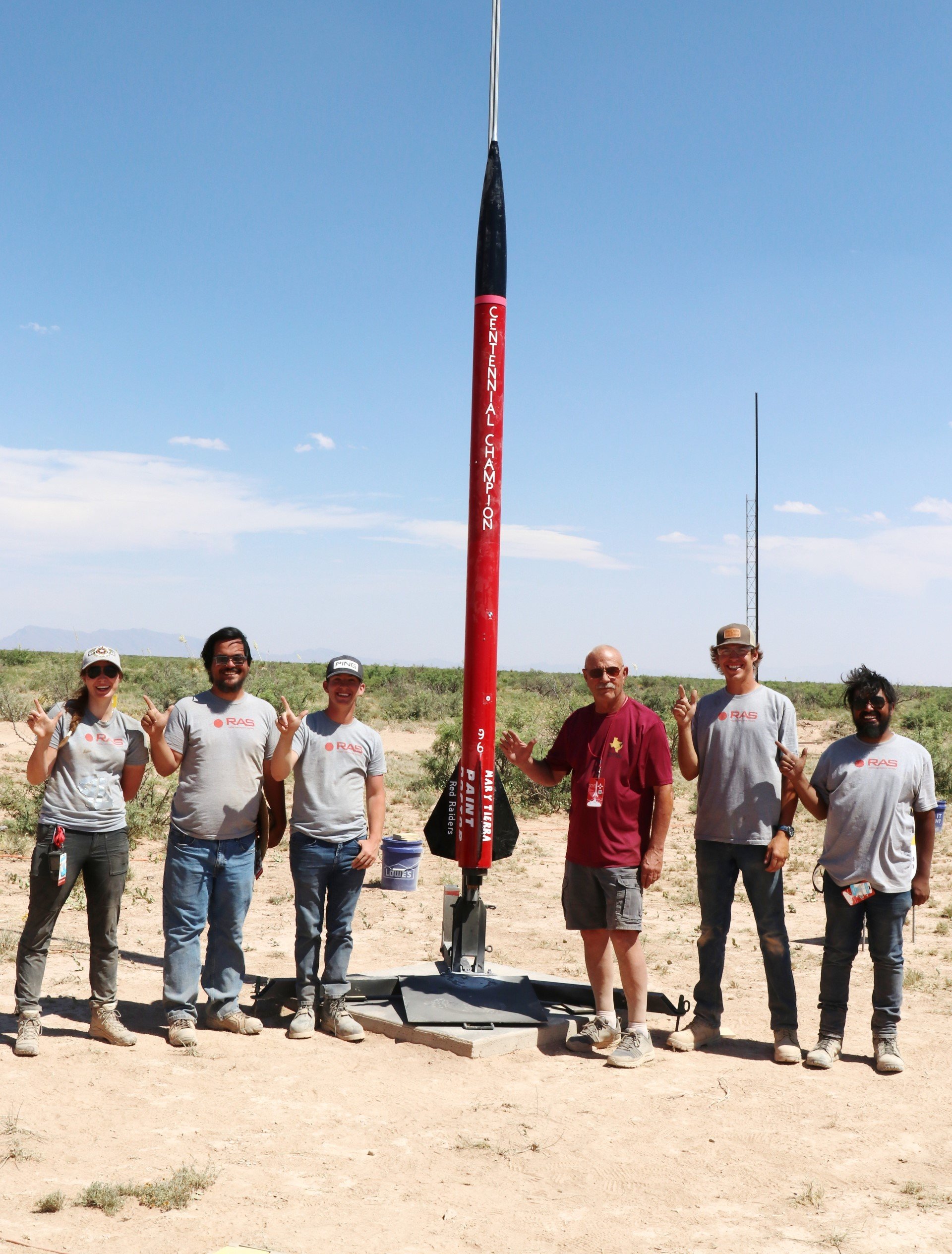About Space Raiders
Space Raiders was formed in August 2017 and was aimed at expanding Texas Tech’s student aerospace capabilities via competitive high-powered rocketry. The team has built on several years of high power rocketry experience to create a high power rocketry capabilities that are competitive at the university level. At the 2024 Spaceport America Cup, Space Raiders competed in the 10K COTS category (using commercial off the shelf propulsion systems) and placed 38th overall out of 122 launching teams and was one of only 50 teams to recover with no damage. Previously, the team also competed in Spaceport America Cup 2023 and NASA Student Launch Initiative (SLI).
During the 2024-2025 academic year, Space Raiders will return to compete at Spaceport America Cup (now IREC, the International Rocket Engineering Competition), this time in the 10K SRAD category (using student researched and developed propulsion systems).









